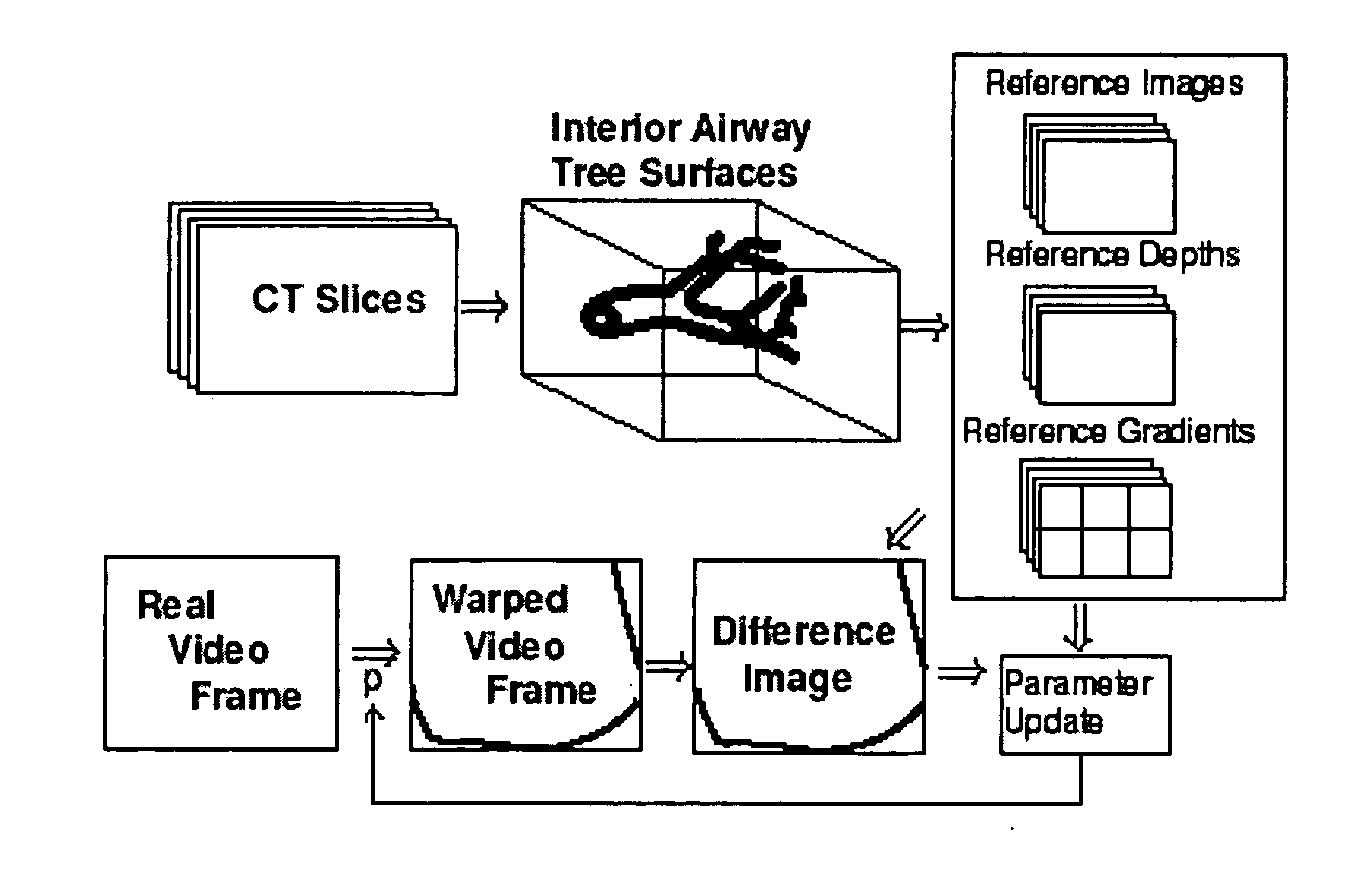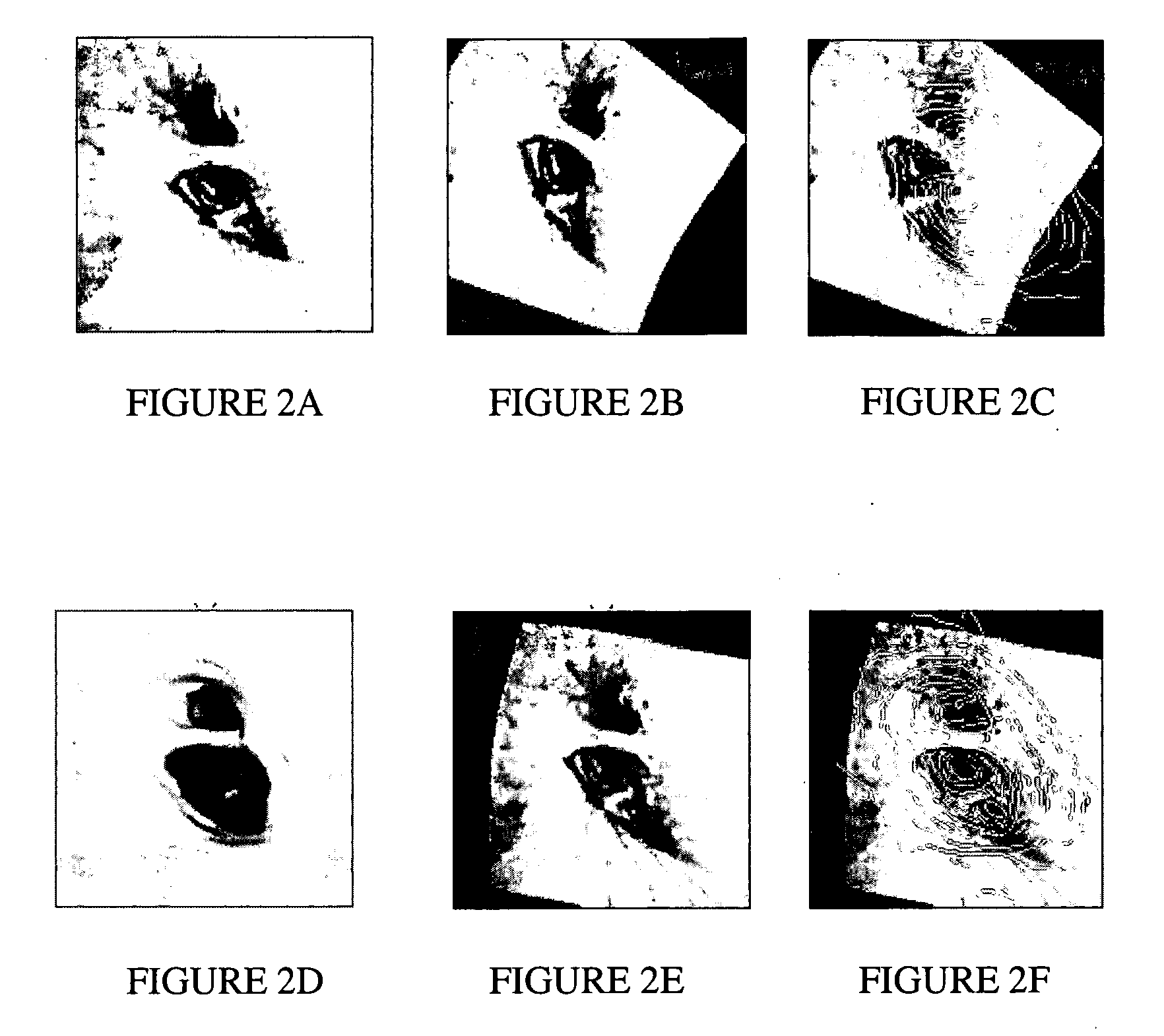Fast 3D-2D image registration method with application to continuously guided endoscopy
a technology of image registration and continuous guided endoscopy, applied in the field of image correlation, can solve the problems of overfitting of images, partial registration information can typically be recovered, and the structure of scenes is inherently lost, and achieve the effect of fast and continuous registration
- Summary
- Abstract
- Description
- Claims
- Application Information
AI Technical Summary
Benefits of technology
Problems solved by technology
Method used
Image
Examples
examples
[0049] To validate the algorithm, sample results for the virtual-to-real and virtual-to-virtual registration cases are given. In both of the cases outlined below, the virtual environment is a CT chest scan of a human patient designated h005. The airway surfaces were automatically generated using the methods of Kiraly et al. [10]. Airway centerlines were extracted using the methods of Swift et al. and the virtual viewing sites were chosen along these airway centerlines at intervals varying between 0.3 mm and 1 mm, with the viewing direction chosen parallel to the airway centerline [11]. Virtual images and depth maps were generated by an OpenGL renderer assuming a spot light source at the camera focal point, a field of view of 78.2 degrees and a 264×264 image size to match the calibration parameters of the bronchoscope camera.
Virtual-to-Real Registration
[0050] The virtual-to-real registration was performed using pyramid decomposition starting from level 3 and ending at level 1. To ...
PUM
 Login to View More
Login to View More Abstract
Description
Claims
Application Information
 Login to View More
Login to View More - R&D
- Intellectual Property
- Life Sciences
- Materials
- Tech Scout
- Unparalleled Data Quality
- Higher Quality Content
- 60% Fewer Hallucinations
Browse by: Latest US Patents, China's latest patents, Technical Efficacy Thesaurus, Application Domain, Technology Topic, Popular Technical Reports.
© 2025 PatSnap. All rights reserved.Legal|Privacy policy|Modern Slavery Act Transparency Statement|Sitemap|About US| Contact US: help@patsnap.com



